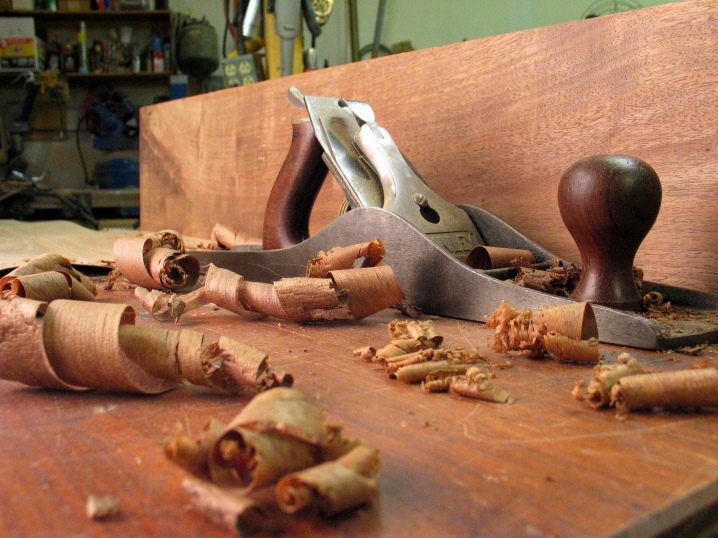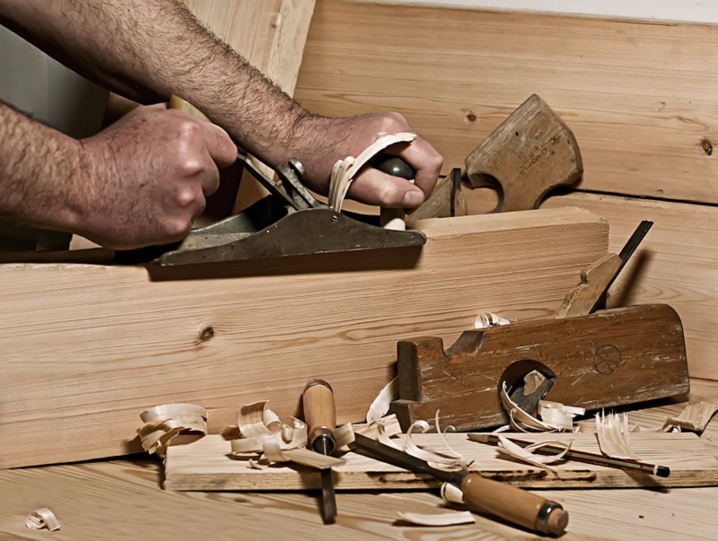What is a zenzubel and how to choose it?

Many people ask what a zenzubel is, what it is intended for. This is the plane needed for curly planing. The tool allows you to make grooves, rectangular cuts, and finish the finished surface. Due to its low weight and oblique blade blade, the chisel can be used to create cross-sections of wood fibers.

What it is?
The zenzubel is a kind of hand plane - a tool needed in joinery and carpentry. Unlike the classic device, it is used for curly, not flat planing. An alternative name is sampling. In most cases, a zenzubel is used for the following purposes:
cleaning of rectangular sections;
choice of quarters on the boards;
creation of folds;
cleaning and selection of quarters on slats and bars.

Thanks to the individual design, the cutter or the metal part of the chisel can be set at a 90 ° angle to the block. There is a side hole in the carpentry tool body. Through it, unnecessary chips are removed. The shape of the chisel knives resembles a spatula that pushes and quickly cuts off a wooden layer.

Before starting work with a planer for figured planing, marking lines are drawn on the workpiece using a planer. First, the size of the quarter is noted, after which the zenzubel is taken. The plane is guided neatly along the markings, removing the first shavings to create a small ledge. In the future, you can take more confident and quick action.

Due to careful use, the chisel is used for finishing, during which you can achieve the required roughness of the working surface and adjust the dimensions of the workpiece. A quarter is usually chosen with a falzgebel. The latter is similar in structure to a zenzubel and also refers to figured planers, but has a number of individual characteristics. These include the stepped outsole.

Tool features
The blade of a carpentry tool is a small spade. The cutting width of the knife varies from 18 to 30 mm. Depending on how the metal part of the planer is attached to the sole, the blade can be oblique or straightened. The length of the knife is about 210-220 mm. If it has an oblique scapular shape, then it has 2 cutting edges. One sharp edge is lateral, the other is lower.

There are planers with a narrow working part, the size of which does not exceed 12 mm. This is a chisel with an oblique blade that sharpens along the side and bottom edges. Together, both cutting parts converge at an acute angle, thanks to which it is possible to make grooves called "dovetail". The oblique blade allows you to handle a wooden surface cleanly, practically without the application of great physical force. The blade-shaped knife with two cutting edges can even perform cross planing - perpendicular to the grain direction.

When using a chisel with a straight blade, to remove a quarter, you will need to mark the workpiece with a thickness gauge. Only after preliminary preparation along the drawn lines do they work with a plane to remove the first wooden layer and make a ledge. To fix the result, they plan with the tool several more times. If you do not want to do the preliminary marking of the lines with a planer, the selection of a quarter is carried out with a falzgebel.
Thanks to this tool, you can increase the accuracy of the work. In this case, the chisel will only be used for finishing.

What is it for?
The zenzubel is needed exclusively for curly planing. There are the following applications for carpentry tools:
creating rectangular slices;
making grooves or folds;
stripping or sampling a quarter;
planing of perpendicular surfaces on wooden blanks.
Thanks to the narrow body and spatula blade, it is possible to remove the cross-section on wood. This is necessary to create the groove.

As a result of high mobility, different models of the zenzub are produced: for longitudinal and transverse work on workpieces. In 85% of cases, carpentry tools are used to finish machining on a previously formed rough surface.

Differences from falzgebel
The zenzubel in accordance with GOST 14668-79 is used for manual processing and planing of a quarter on blanks of joinery. At the part, the body of the zenzuba is quite high, reaching 80 mm. At the same time, the plane is narrow with a straight sole. The presence of a special hole in the body for free removal of chips during the planing process increases the quality of processing of a wooden product. It is easier to create a quarter using a slanted chisel, which is sharpened on the bottom and side.

Falzgebel, according to GOST 14669-79, is intended only for selection of quarters, folds in wooden blankskah. Compared to the zenzubel, the falzgebel block has a stepped sole. Thanks to this structure, you can choose the folds of the same size. To do this, the blade is placed at an angle of 80 ° in relation to the shoe shaft, the side hole for the chip exit should be located on the left side of the sole.

A falzgebel, in contrast to a zenzub, is used to cut a groove at the ends of long parts. During its operation, it is not required to do preliminary marking with a thickness gauge. The carpentry tool, in addition to the stepped sole, has a wide last, thanks to which it becomes possible to make folds of the same size.

For selection of grooves of different sizes, differing in profile, in some models of the falzgebela manual replacement of the stepped sole is provided. There is a possibility of installing an additional side knife. In this position, the blade allows you to trim the vertical wall of the quarter.

How to choose?
The selection of a suitable carpentry tool is based on the following criteria.
Price. The minimum price of a zenzubel is about 7,200 rubles.
Robust case. There are wooden, metal, plastic models.
Weight. Carpentry tools with a wooden body are lightweight, cast iron tools are quite heavy, so more effort is needed during their operation. For curly processing, it is better to choose a light wooden product.
Simplicity and durability of operation. It is recommended to purchase a tool from quality materials that will last at least 2-3 years.

For reliable operation of the chisel, it is necessary to choose a product with a sharp blade, which must be correctly installed. During regular use, the knife often becomes blunt, so you need to familiarize yourself with the rules for sharpening it in advance.

A correctly installed blade should not protrude much above the level of the sole, only by a fraction of 1 mm. When viewed along the last, the cutting edge will visually resemble a thin thread.

When the blade protrudes too far above the soleplate, a thick layer of shavings is removed. The wood removed from the surface of the workpiece is hammered between the sharp blade and the body, it is not removed from the side hole. Because of this, work becomes more difficult, the risk of defects forming on a wooden product increases. If the knife is located above the level of the sole, its cutting edge is located in the body, and it becomes impossible to work with such a tool.The planer will not plan the wood.

As a last resort, you can independently adjust the blade release. This can be done with a wedge or a screw, depending on the structural features of the plane. Knock out the wedge with a hammer or mallet. In this case, it is strictly forbidden to influence the cutting edge of the blade. Otherwise, the knife will become dull, the tool will be unusable. When self-adjusting, make sure that the cutting end protrudes evenly over the entire width of the blade.

It is recommended that you check the sharpening of the blade before purchasing. It is enough to carefully slide your finger across the cutting edge. It is strictly forbidden to run your hand along the blade, otherwise you may cut yourself. For a high quality product, the blade should not be rusty or dull.

General comparison, external difference between zenzubel and falzgebel in the video below.













Another name for the zenzubel is the shoulder plane, which reveals its main function: processing the shoulders in the tenon joints.
The difference between a zenzubel and a falzgobel is the same: a side limiter is installed on the foldedgobel, which allows you to select even folds or tongues, but this is not the main function. For tongue and groove there is a tongue and groove, it is narrower and, in some cases, allows you to change its width.
The comment was sent successfully.